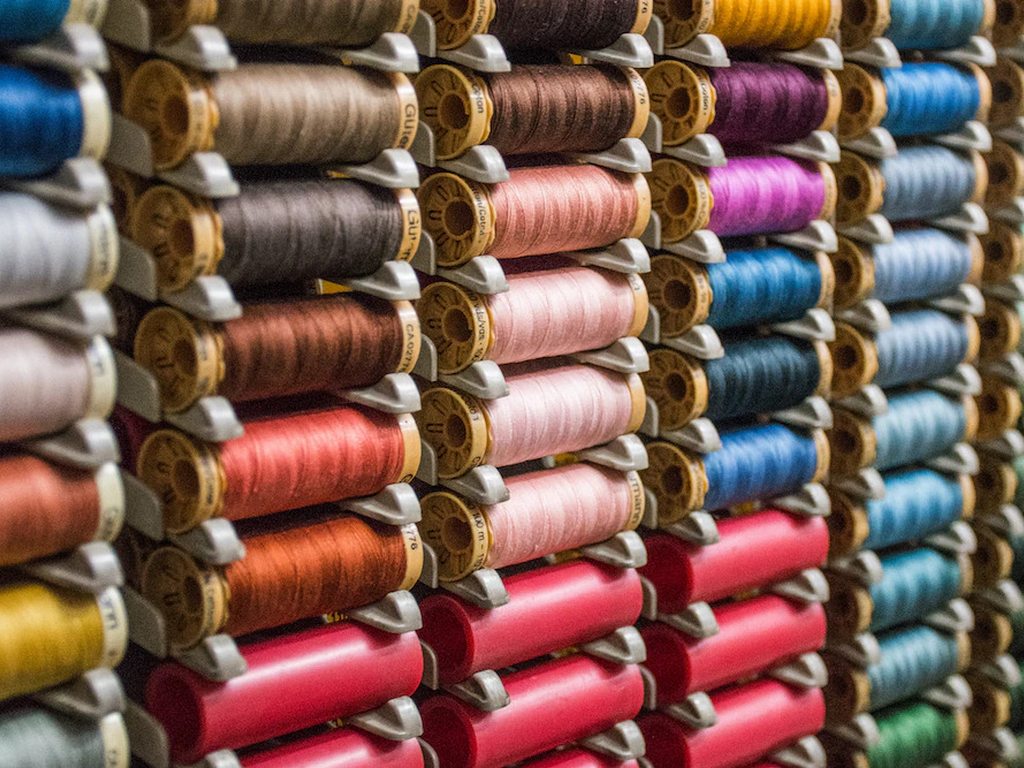Exploring the New Age Textile Shaping the Future of Clothing
07/12/2023 2024-01-05 10:38Exploring the New Age Textile Shaping the Future of Clothing
Exploring the New Age Textile Shaping the Future of Clothing
The fashion industry is dynamic and influenced by societal and cultural shifts, technological development, and environmental issues. Several significant trends and inventions are already affecting the direction of the fashion industry as we look to the future of clothing. The new-age textiles, posed to revolutionize how clothing is made in the future, are one of the most exciting improvements in this field. Moreover, technology advancements, future fashion trends and audience preferences will answer questions like “what is the future of fashion?”
This blog covers how new-age textile trends will shape the future of the fashion industry. So, without further ado, let’s dive in.
The Fashion of the Future
Innovation, creativity, and sustainability are the three pillars of the apparel industry of the future. The fashion industry is moving towards greener practices as customers become more conscious of the effects of their decisions on the environment.
As a result, fashion houses, brands and designers are finding innovative ways to implement cutting-edge technology and sustainable practices to produce high-quality eco-friendly products.
Improving cutting-edge technologies to produce eco-friendly and robust fabrics will be a key component of the future of fashion.
These upcoming trends will decide how will fashion change in the future and are further explained in detail.
What Future Changes Can We Expect in Fashion?
The fashion industry can see a significant transformation as more companies start to place a higher priority on sustainability and ethical practices.
The Fashion Industry’s Future

The fashion industry is changing quickly as trends are influencing rapid modernization in the industry. The following pointers will answer the question: what is the future of fashion industry?
Future Trends in the Fashion Industry
1.Sustainable Practices:
Sustainability and ethical practices are being prioritized by companies. Using recycled resources, upcycling, cutting waste, and embracing circular economy models will lead the industry toward a new phase. These practices will cut costs and sustain new advancements.
Innovative technologies and environmentally friendly procedures are used to create new-era textiles. Sustainable materials like organic cotton, bamboo, and recycled polyester are gaining popularity, because of their light fabric and eco-friendly nature.
Moreover, the last decade has seen an increase in educated consumers that priorities conscious consumption. Consumers gravitate more toward ethically sourced, manufactured and eco-friendly products.
Trends in Sustainable Fashion
As the fashion industry is growing, a lot of future design trends will be introduced in the market. Here are a few of our predictions to look out for:
With the growth of the fashion industry, sustainable fashion is a vital aspect that addresses the social and environmental impact of the industry. Consequently, companies, brands and designers are responding by incorporating the following practices and trends.
- As consumers look for ways to reduce waste and prolong the life cycle of their clothing, upcycling and repurposing clothing and materials are growing in popularity. This is leading toward sustainable fashion trends.
- Using every scrap of fabric when creating clothing designs to minimize waste.
- Local and small-scale production have more control over the manufacturing process, which fosters accountability and transparency throughout the supply chain.
2.Digitalization:
Every industry is going through a digital transformation, and fashion is no different. We can anticipate seeing more individualized and customised clothing experiences in the future. Companies are adopting new technologies like 3D printing and virtual try-on after the shift towards e-commerce and digital retail interfaces.
We can expect digital components integrated into the fashion industry, such as augmented reality dressing rooms These AI dressing rooms will allow people to see what they will look like in an outfit without trying the outfit. It will benefit in many areas as less time-consuming and will give a more interactive shopping experience.
3.Collaborations and alliances:
The fashion industry has become more interconnected, with alliances and partnerships between tech as well as sustainable companies. We can anticipate seeing more gender-neutral clothing choices in the future as society becomes more accepting of gender diversity.
You can also be a part of these upcoming changes in the fashion industry. There are various courses available that can guide youngsters’ interest in the industry. JD School of Design offers postgraduate programs in Fashion and Textile Design.
The program equips you with the knowledge, skills, and guidance from industry experts and can even land you a paid internship!
The Textile Industry’s Future

The textile industry is experiencing a significant transformation as new technologies and sustainable materials are developed. So, what is the future of textile industry?
The following are some ways in which these changes are likely to influence the industry’s future:
- Demand will increase as the population is increasing. It is estimated that the market will rise to at least 11 billion dollars.
- New technologies will kick in as demand for machinery increases. Leading to a reduction in man Laboure.
- More experiments are on their way. Designers are going out of their way to create and showcase their pieces. Like spray paint dresses are new in the market.
These changes are directly influenced by new technologies in the market, but what is the new technology in textile industry? Here are a few of the upcoming technologies and trends:
- Companies are encouraging recycling, as well as using sustainable materials along with manufacturing techniques.
- The demand for vintage or used clothing among consumers is rising, which lowers the demand for new clothing manufacturing and lengthens the lifespan of current garments.
- Designers are preferring technical textiles over conventional ones due to their unique features like insulation, UV protection and more.
With these upcoming technologies and rising trends, keeping up with the market is difficult. New terms and technologies are creating a huge wave of change. Technical textile is also a part of this change. But what is the difference between technical textile and conventional textile?
- Technical textiles are created with particular functional properties in mind and not only created for aesthetic reasons.
- Technical textiles have been developed to serve a particular purpose, such as UV protection, moisture control, or insulation.
- Technical textiles’ strength and effectiveness make them a better choice in other industries, such as the automobile, aerospace, and healthcare sectors.

Concluding words
We hope that you have a glimpse of what the future holds for the fashion industry. Innovation, technology, and sustainability in fashion and textiles will likely influence fashion’s direction in the future. Developing technical and new-era textiles is revolutionizing the textile sector and laying the path for the future of clothing.
If you have a knack for fashion and wish to make a career in it, prepare yourself with a thorough degree. Check out courses offered by the JD School of Design to help you kickstart your journey in fashion.













